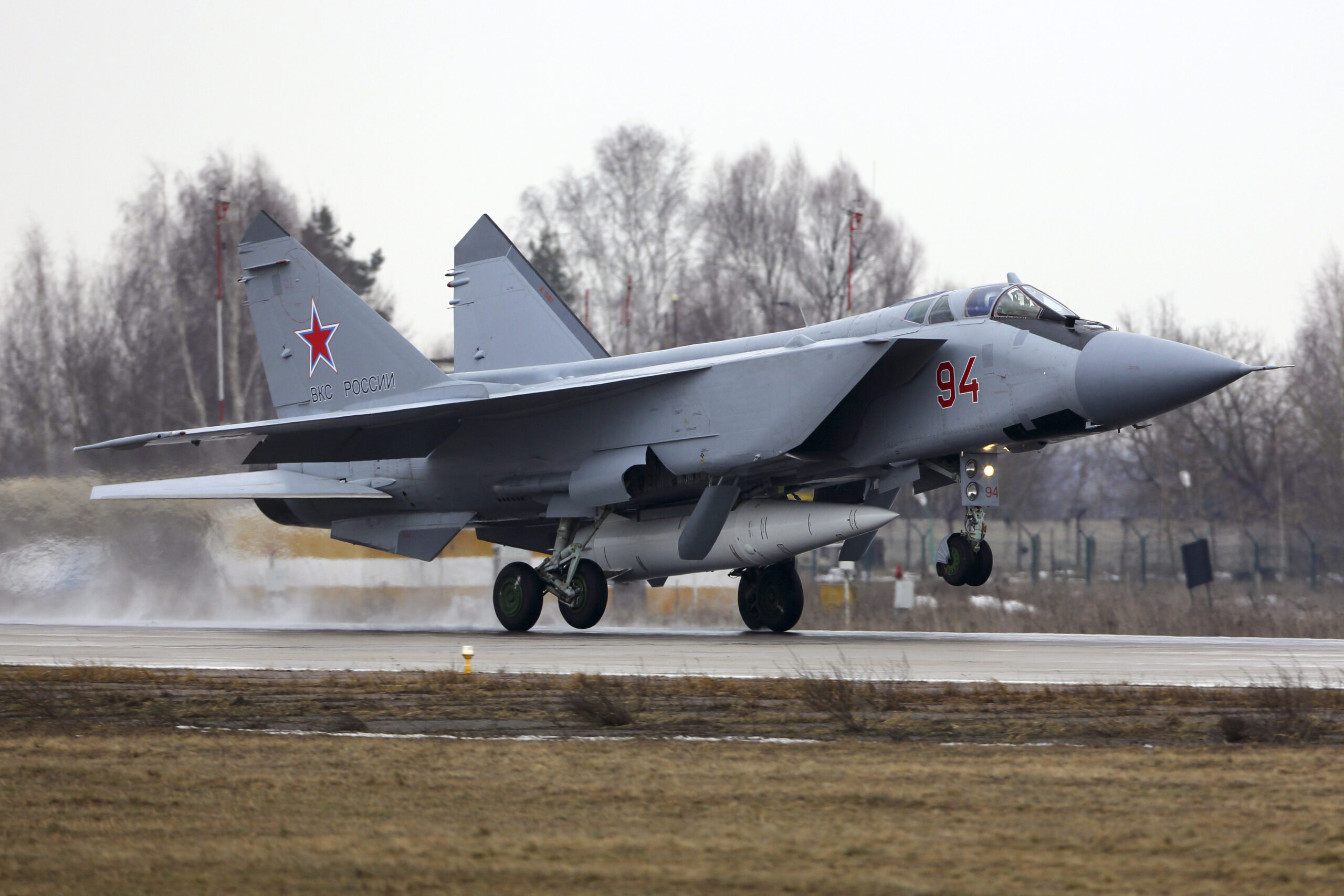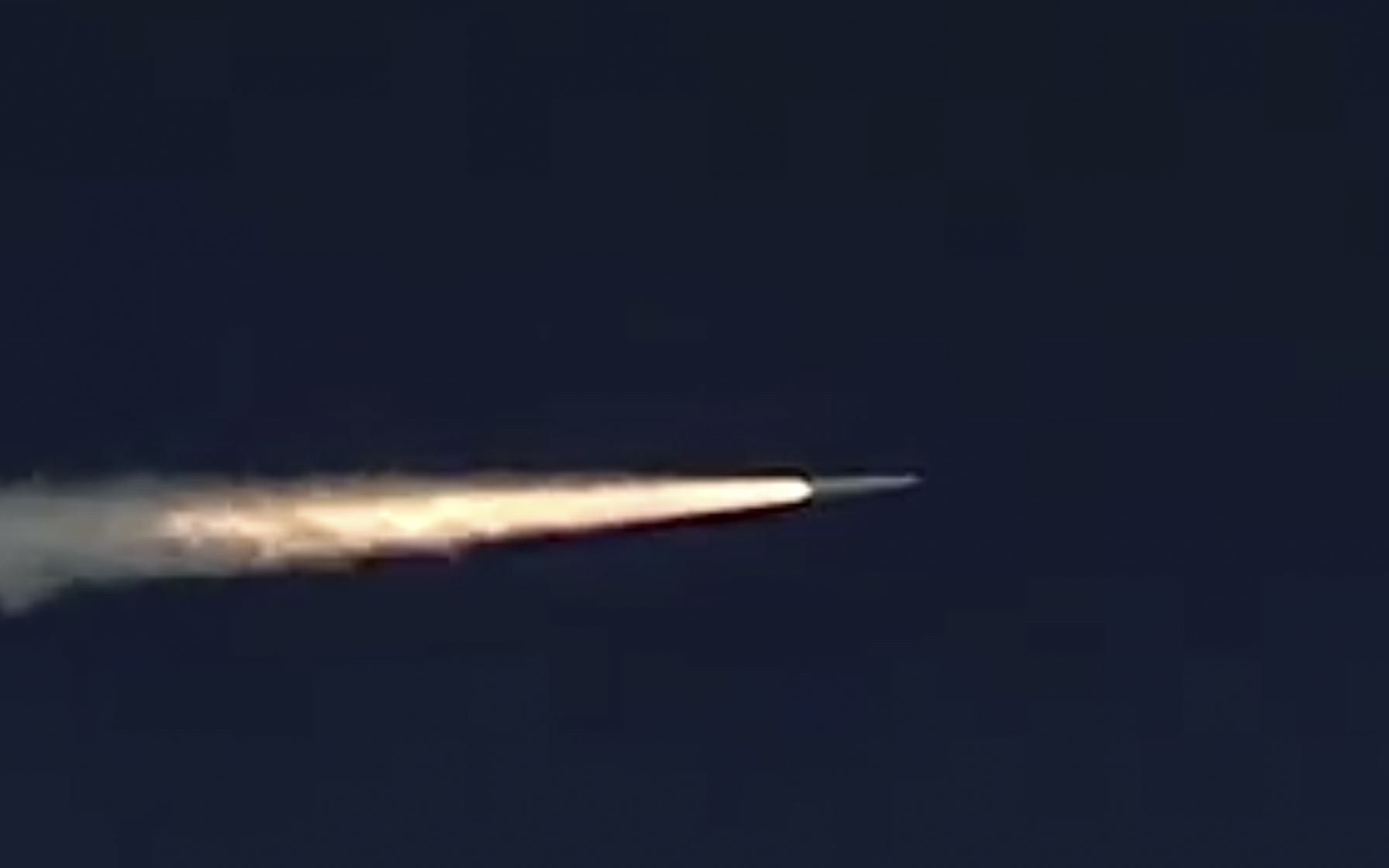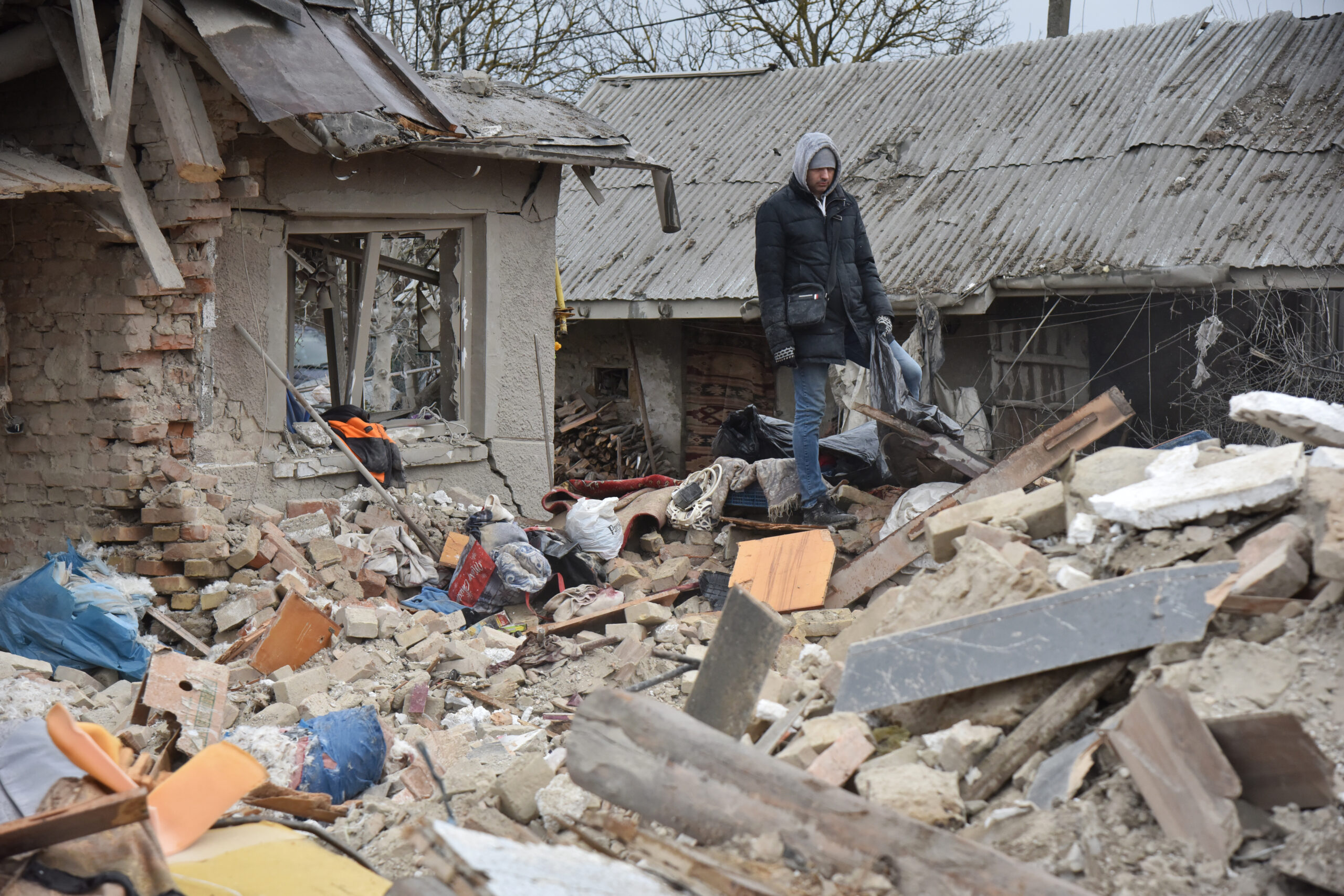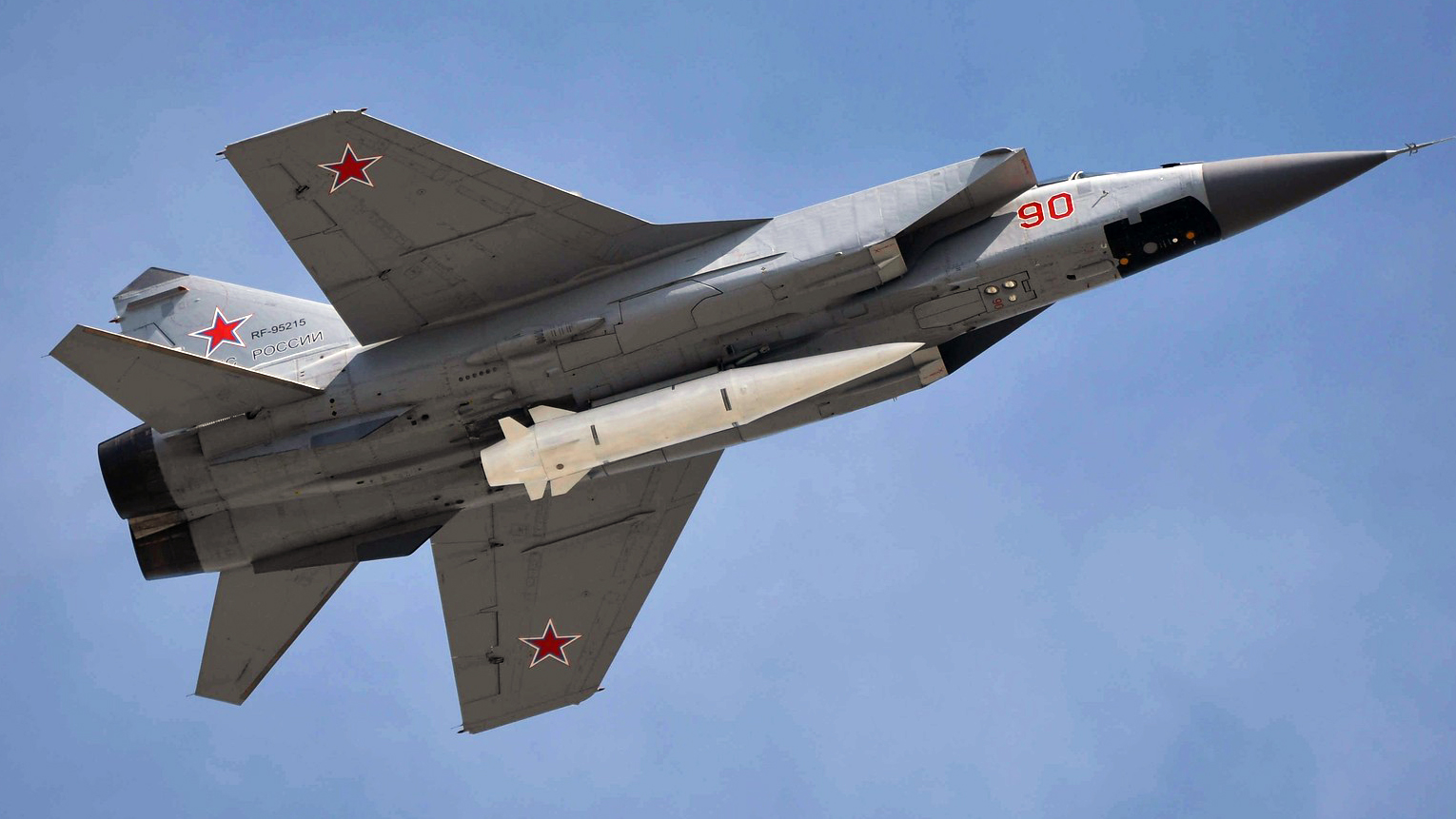A large Russian missile barrage on Ukraine Thursday included the biggest single-day volley of 9-S-7760 Kinzhal (Kh-47) hypersonic quasi-air-launched ballistic missiles, according to Ukrainian officials.
Of the 81 missiles fired into Ukraine by Russian forces, six were Kh-47s, the Ukrainian Air Force says. At least 11 people were killed and more than 20 injured during the overnight attacks, according to CNN, citing preliminary information from regional authorities.
“There was no case of allocation of this number of” Kh-47s before, Col. Yuri Ignat, the Ukrainian Air Force spokesman, told reporters at the Ukrainian Media Center Thursday.
The Kinzhal (Russian for dagger) is an Iskander short-range ballistic missile that is specially adapted for air-launch. They are fired by MiG-31 Foxhound heavy interceptors modified to carry a single such missile. Given the range and speed of these weapons, a nationwide alert goes off each time a Foxhound is spotted taking off in neighboring territory, Ignat told reporters.

It is one of three missiles – along with the Kh-22 and the S-300 air defense missile being used as a surface-to-surface strike weapon – that Ukraine’s Air Force says it cannot defend against. The latter two have been used far more frequently by Russia than the Kh-47s.
Russia also fired six Soviet-era Kh-22 supersonic cruise missiles from Tupolov Tu-22Ms operating from the south and north, Ignat said Thursday.
“I emphasize that it is impossible to shoot down Kh-22 missiles with the means we have in our arsenal,” Ignat said in January, after a deadly attack on a Dnipro apartment building.
There were also 13 S-300s fired Thursday according to Ukrainian officials.
These missiles pose a major challenge to Urkaine’s air defenses thanks to their speed.
The Kh-47 was estimated to have flown at a speed of over 3,728mph during its first operational use, which took place in Ukraine almost exactly a year ago on March 18, 2022. There were two other reported uses of the Kh-47 around that time and few if any since until Thursday.

The Kh-22 accelerates to Mach 3 – nearly 2,300 mph – before approaching its target. In its terminal phase, the missile dives at a steep angle and attains a maximum speed of over Mach 4 – more than 3,000 mph. Primarily an anti-ship missile, the Kh-22 was originally developed as a so-called aircraft carrier killer with a secondary capability against high-priority static area targets on land.
The S-300 also presents a challenge thanks to its speed.
When asked if all six Kh-47s were launched at Kyiv, Ignat declined immediate comment, saying that more information was needed to make that determination.
The attack also included eight Shahed 131/136 drones, according to the Ukrainian Defense Ministry (MoD), of which half it claimed were destroyed by air defenses.
In all, there were 10 regions in Ukraine attacked in this latest barrage, according to Ukrainian President Volodymyr Zelensky.
“It’s been a difficult night,” he said on his Telegram channel. “A massive rocket attack across the country. Kyiv, Kirovohrad, Dnipro, Odesa, Kharkiv, Zaporizhzhia, Lviv, Ivano-Frankivsk, Zhytomyr, Vinnytsia regions. Attacks on critical infrastructure and residential buildings.”

“Unfortunately, there are injured and dead. My condolences to the families,” Zelensky said. “All services are working. The energy system is being restored. Restrictions were imposed in all regions.”
The latest Russian barrage was an “attempt to intimidate Ukrainians again, returning to their miserable tactics,” Zelensky said. “The occupiers can only terrorize civilians. That’s all they can do. But it won’t help them. They won’t avoid responsibility for everything they have done.”
The attack was designed to destroy Ukraine’s energy infrastructure, said Energy Minister Herman Galushchenko.
“The Kremlin does not abandon its intention to destroy the energy sector of Ukraine and uses a new tactic: it releases all types of missiles and drones simultaneously at generation and distribution facilities,” he said. “Despite the powerful work of Ukrainian air defense, unfortunately, we do not have the means capable of destroying some types of these missiles. That’s why there is a hit to energy infrastructure facilities.”
A power line that fed the Zaporizhzhia Nuclear Power Plant (ZNPP) was damaged during the attack, temporarily cutting off power, Galushchenko said.
“In a few hours, Ukrainian energy workers restored power supply to the nuclear plant from the Ukrainian power system, once again saving the ZNPP from a possible accident.”
The attack on the ZNPP prompted International Atomic Energy Agency (IAEA) Director General Rafael Grossi to issue a warning, according to Reuters.
“Each time we are rolling a dice. And if we allow this to continue time after time then one day our luck will run out,” Grossi told the IAEA’s 35-nation Board of Governors
The Russian Defense Ministry (MoD) on Thursday claimed the “massive retaliatory strike” was a response to “the terrorist acts in the Bryansk region organized by the Kyiv regime” on March 2.
You can read more about that incident and the conflicting claims about what really happened here.
“High-precision, long-range air-, sea- and land-based weapons, including the Kinzhal hypersonic missile system, hit key elements of Ukraine’s military infrastructure, defense and industrial complex enterprises, as well as energy facilities that support them,” according to the Russian MoD. “The purpose of the strike has been achieved. All the assigned targets have been neutralized. The strike destroyed unmanned drone strike sites, disrupted the movement of reserves and railway transport of foreign weapons, and impeded military repair and ammunition production facilities.”
Ukraine, however, said that while the strikes were deadly and damaging, most of the cruise missiles fired by Russia were destroyed.
Of 28 air-launched Kh-101/Kh-555 and 20 sea-launched Kalibr cruise missiles fired in this barrage, 34 were destroyed, according to the Ukrainian Defense Ministry.
Ukraine also claims that “as a result of organized countermeasures,” two Kh-31P and six Kh-59 missiles “did not reach their targets.”
“We thank the guardians of our skies and everyone who helps to overcome the consequences of the occupiers’ sneaking attacks,” Zelensky said.
As to why there hasn’t been more Russian use of Kh-47s, or whether this attack is a precursor for more, it is well known that these weapons were very limited in number before the full-on invasion began. Resupply has likely been curtailed by sanctions, like many of Russia’s high-tech weapons programs. Even the Iskander-M short-range ballistic missiles — a staple of the early stages of the conflict — which the Kinzhal is based on have been reduced in numbers to the point that they are barely used in Russia’s war efforts anymore. Of course, both types also have strategic value, so running their stocks down completely would be highly problematic. Using what examples they do have as part of a layered attack, with drones, cruise missiles, and other types launched near-simultaneously makes sense as it would improve the chances that any of them make it to their targets.
The Kh-47s, along with Kh-22s and S-300s are presenting a challenge Kyiv cannot meet with its current air defense system. That’s another reason why officials there, like Ignat, continue to call for additional provisions of systems like the Patriot system, which Ukraine is set to receive, but in small numbers.
Contact the author: howard@thewarzone.com
